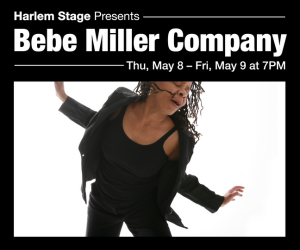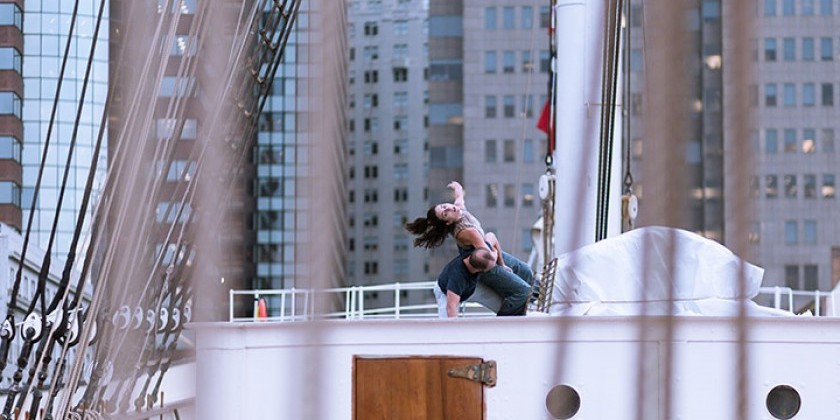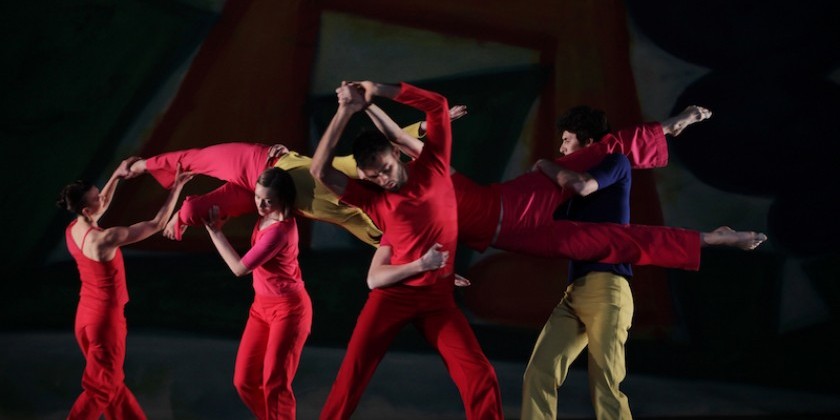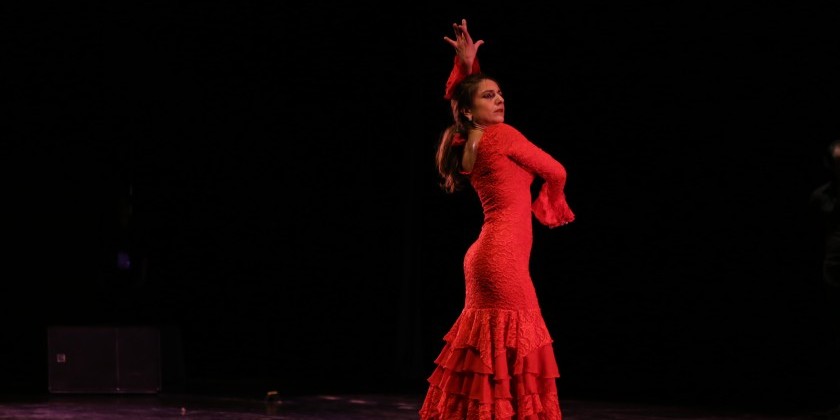DAY IN THE LIFE OF DANCE: Carolyn Lucas on Trisha Brown, Robert Rauschenberg, and 50 Years of the Trisha Brown Dance Company at The Joyce
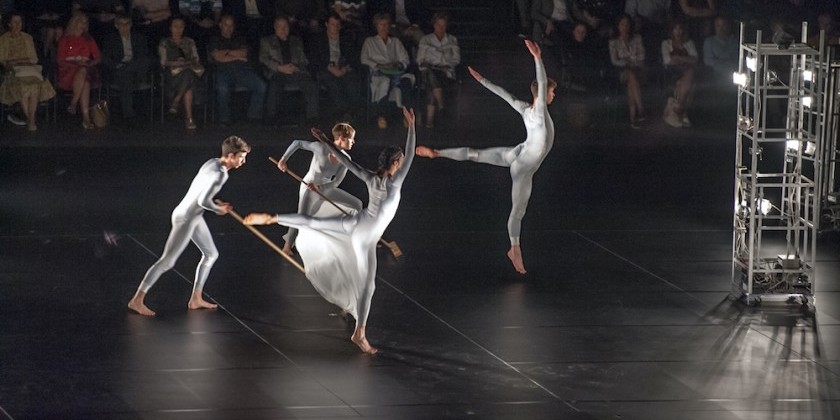
TRISHA BROWN DANCE COMPANY’s 50th ANNIVERSARY SEASON
VENUE: THE JOYCE THEATER, MAY 24-29
TICKETS: VISIT THE JOYCE THEATRE
In Trisha Brown’s work we experience space, time, and movement in deceptively simple, and wondrous ways. Just last week at The Joyce Theater, during Stephen Petronio’s most excellent season, I was mesmerized while watching his company perform Brown’s, Group Primary Accumulation (1973).
Four dancers dressed in white jumpsuits lie on their backs in a vertical line. In silent unison, gesture sequences are built and rebuilt. 1 - An arm moves from the elbow. 1, 2 - Arm from elbow, other arm extends. 1, 2, 3 - Elbow, arm extension, lift of the head, and so on — repetition and addition, dance gathered moment by moment.

We’re invested from the get-go — following along, recognizing what comes next, but also wondering,“Well, what will they that do after that?”
The repeats, the sounds of bodies moving on the floor, the breath, become their own music.
When the next small move noiselessly shifts the line in space, and we suddenly see the dancers from an entirely new perspective, it’s thrilling. That Brown could wow us with a simple angle change — genius.
As the Trisha Brown Dance Company prepares for its 50th Anniversary Season (postponed for two years due to Covid) Carolyn Lucas, longtime performer and currently the company’s associate artistic director, still finds herself surprised by Brown.

Lance Gries, Kevin Kortan in Astral Converted (1991); photo © Johan Elbers
Digging through archives, reading, watching lecture demonstrations, and simply remembering time in the studio with her colleagues, she marvels at Brown’s humor, rigor, sense of play, and 'uncanny' relationship with the visual artist Robert Rauschenberg.
One senses from the outside that Rauschenberg and Brown could be described as two artists who completed each other’s sentences. They certainly admired one another. Rauschenberg felt able to work with Brown because she “thought like a painter.” (Lucas is reading to me from notes she has been making.) Brown appreciated that despite Rauschenberg’s artistic fame, “He still had to get up every morning and face having to be creative again.”
Now and again, Lucas breaks away from her notes to emphasize, “Bob just loved dancers. I always felt like he loved dance more than anybody I had ever met. And he was so in love with Trisha’s movement and her work. He thought we were all great, and he let us know it.”

Diane Madden and Lance Gries in Astral Converted (1991); photo © Johan Elbers
Brown and Rauschenberg collaborated for five decades. It started in the 1960’s with back and forth phone calls made when Brown was a student at Merce Cunningham’s dance studio. They formalized their admiration in 1979 with Glacial Decoy and famously collaborated with Laurie Andersen in Set and Reset (1983). This season, New York audiences will be treated to two other pivotal projects: Brown’s Foray Forêt (1990) with original costumes by Rauschenberg, and her Astral Converted (1991) featuring Rauschenberg’s costumes and his curious set of mobile lighting towers.
Astral Converted started out as Astral Convertible in 1989, Lucas reminds me. “It was the last piece in the Valient Cycle.” Brown, who created series’ of dances based on her particular movement investigations, called this cycle, Valient because she was playing with bold, virtuosic physicality.
“When Astro… was being built, it was rough,” Lucas explains,“but one of the things that was so beautiful about it was watching these technical giant dancers just going for broke, reaching and really trying to stretch beyond…”
“Trisha started out very simply,” she goes on.“Creating a floor dance for the people all the way up in the nosebleed seats.—and the floor work is pretty active throughout the choreography. And there is a standing dance.”
But how did Rauschenberg become involved?

Trisha Brown and Robert Rauschenberg with dancers Dianne Madden and Lance Gries in front of the towers designed by Rauschenberg, with the technical assistance of Per Biorn and Billy Klüver. Set for Astral Converted (1991); photo © Jack Mitchell
“Before this even started, before the collaboration,” says Lucas, “ we were on tour and our booking agent was talking with Trisha about touring circuits —primarily summer performances where people were gathering together outdoors. You know, no electricity for light, no wings, or anything. And the agent says, ‘I mean I would love to try and book you to get to some of these places on our tour, but you have these big sets and…’ Trisha replied, ‘Well, don't count me out yet.’”
She then called Bob and asked, “Can you make an inflatable set?”
His answer —an emphatic NO.
Lucas laughs at her memory. “But he did come back with the towers.” These magical towers have their own self-contained electrical capacity. Run by car batteries, they react by chance to the dancers movement. “You just needed a stage to dance on and it was like a theater. ”

Stuart Shugg and Tara Lorenzen in Astral Converted (1991). Photo © Stephanie Berger
Foray Forêt’s excitement lives not only onstage, but also in the wings and with the peripheral exits (“Feathering off, ” Lucas calls it) and entrances of dancers. As I watch, the piece feels like a stunning, quirky dream parade. Foray is part of Brown’s Back to Zero cycle that speaks of unconscious gesture and mystery.
Rauschenberg designed the costumes and the lights, telling Brown, that he picked for her the “cheapest, sleaziest looking fabric.” “Yet ,there was a beautiful thing that he had going on there,” says Lucas. All the colors and brightness of the gold and silver made a difference.”

Laurel Jenkins, Tamara Riewe, Dai Jian, and Elena Demyanenko in Foray Forêt (1990); photo © Julieta Cervantes
One of my favorite aspects of Foray, is its silence being interrupted, oddly (but perfectly) by a marching band playing in the background.
“Trisha was somewhere, maybe in Spain, out on a balcony, when she heard a marching band in the distance,” explains Lucas. "It conjured up for her the idea of memory. So she wanted to have a marching band travel around outside of the theater and then come in, hoping people might see it as something distant and unrelated, or wonder what's going on. Bob told her that that was ‘the best, worst idea you've ever had.’"

Dian Jian, Laurel Jenkins, Sam Wentz, Tamara Riewe, Elena Demyanenko in Foray Forêt (1990); photo © Julieta Cervantes
I wonder, “How did Trisha communicate with dancers about what she was working on, her structures and her cycles? Were there long discussions?”
“It would come to us as a proposition of movement,” says Lucas. “When we started, she would throw movement and we might catch it. She would pass something out. She was an incredible phrase maker. I don't know if anybody could ever explain how she created such beautiful material, but there was acres and acres of it. She always had notebooks and once in a while she'd open up a notebook to show us drawings for new work or, you know, give us little hint. For Foray… she said ‘I just want the unconscious gesture.’ She was nervous about the “soft phrase” [ a nine minute phrase within the dance] We didn't know this at the time, but a little bit later she said that she felt so so exposed and wanted to get the movement out before she could think about what anything meant. It was an incredible experience to be there with her making that…”

Tamara Riewe, Elena Demyanenko, Dai Jian, Leah Morrison in Foray Forêt (1990); photo © Julieta Cervantes
"Do you remember your first impressions of Trisha Brown’s work? You’ve been with the group for 34 years, what attracted you to begin with?"
Recalling being taken to a Trisha Brown concert as a 19- year-old SUNY Purchase student, Lucas remembers, “More than seeing the amazing choreography, I was in love with the movement. I’d never seen people move more fluidly… It went straight into my bones and nervous system. I thought, now that would be something I want to do. Once that got in my mind, I couldn't let it go.”





